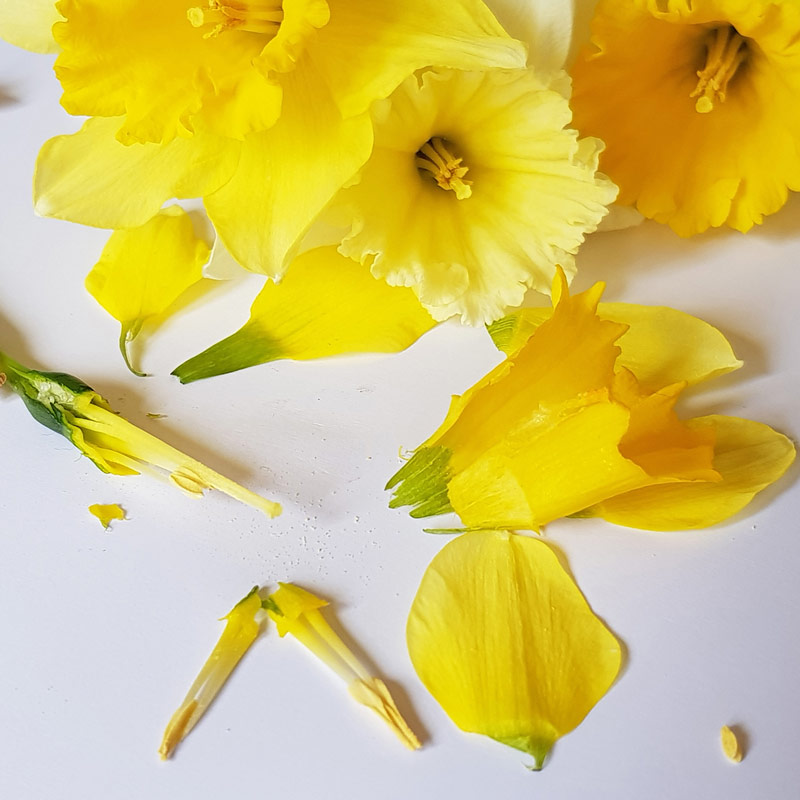 Despite the cold, spring IS here!
Despite the cold, spring IS here!
The daffodils are out in all their golden glory and it's the perfect time for an egg hunt with a little bit of a difference ...
BECAUSE those lovely yellow daffodils are hiding a whole stash of secret eggs.
And they are the perfect flower to dissect to help kids truly see for themselves what goes on when a flower is pollinated.
Though when I say dissect, I really mean cut up or gently pull apart, as it's fun to feel the textures of the different parts of the flower.
And it means all you need for the experiment is:
- A daffodil or two.
- AND your mobile phone. Nothing else.
But in this lovely activity - great for classroom and home learning - children will learn:
- The parts of a flower
- How each part supports pollination
- The role of bees in pollination
Please feel free to share and do check out my other simple hands on ideas for exploring flowers & pollination.
N.B. Make sure children and pets DO NOT eat any part of the daffodil - they are toxic.
Dissecting Daffodils
1. Grab A Daffodil
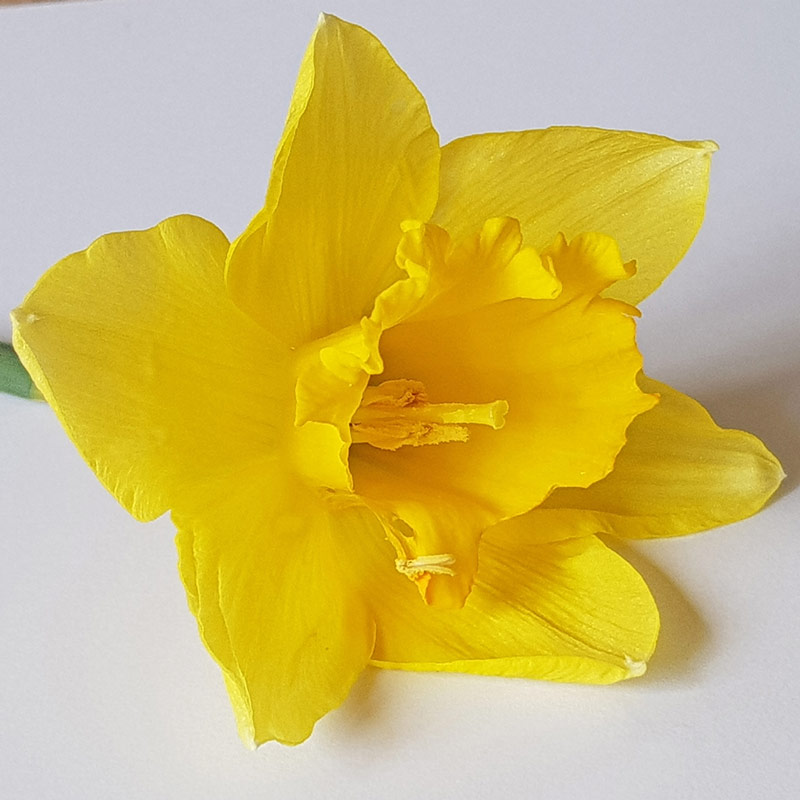
Just grab a daffodil.
This one from our front garden was a bit bashed by the snow.
And admire it's golden gown!
2. Buzz Close Up Like A Bee
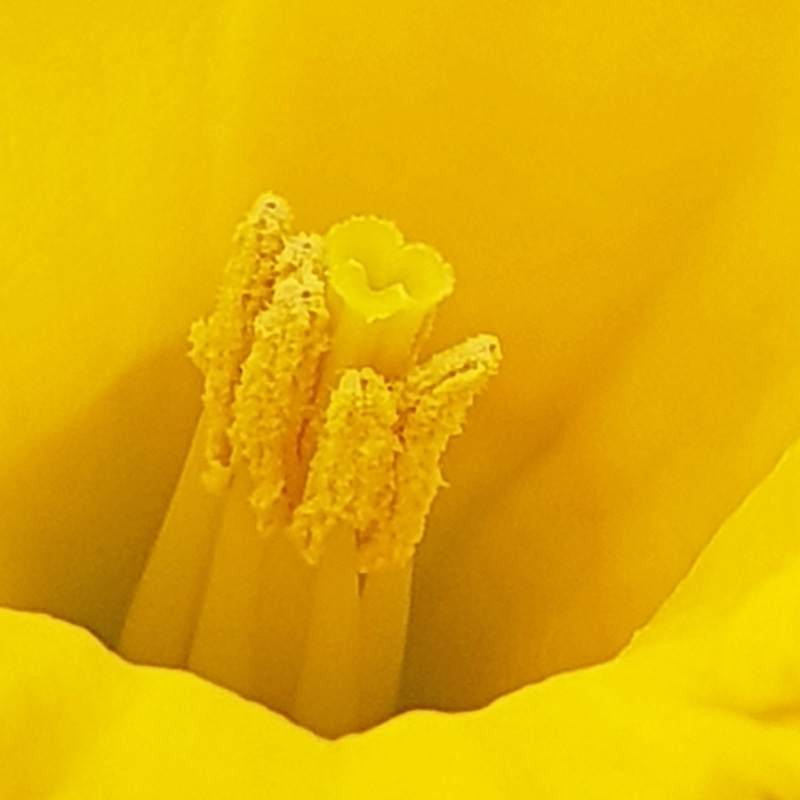
Then buzz up close like a bee and check out what you can see. Inside the petals spot:
- The long thin trumpet
- Surrounded by all that pollen
We're going to check them out first.
Before we go hunting the daffodil's eggs.
3. Gently Take Off Outer Petals
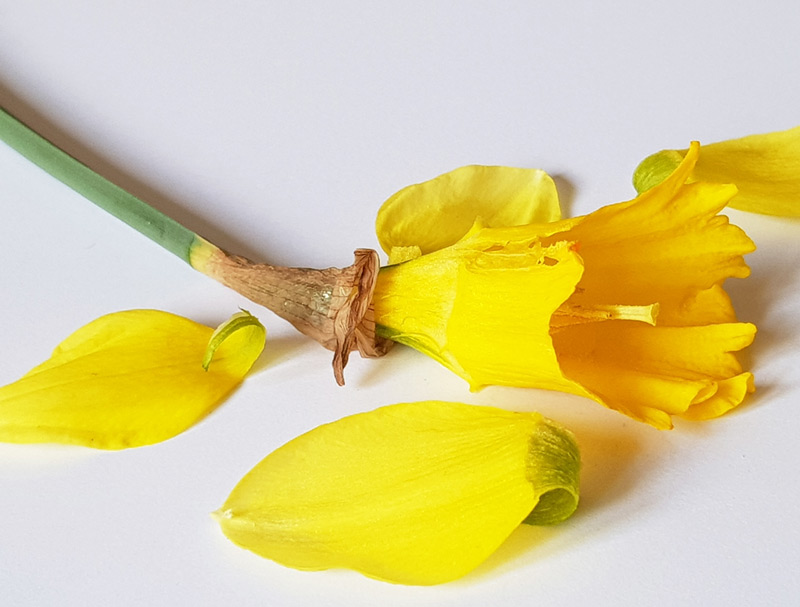
Gently take off the the daffodil's outer petals and have a wonder:
- why it might have outer and inner petals
- and why those inner petals - the corona - are sometimes a different colour.
Could it be to attract the bee from a distance? And then to direct it into the pollen?
Yes. But there's also something else inside the corona the daffodil needs the bees to visit.
Let's have a look.
4. Pull Away Inner Crown
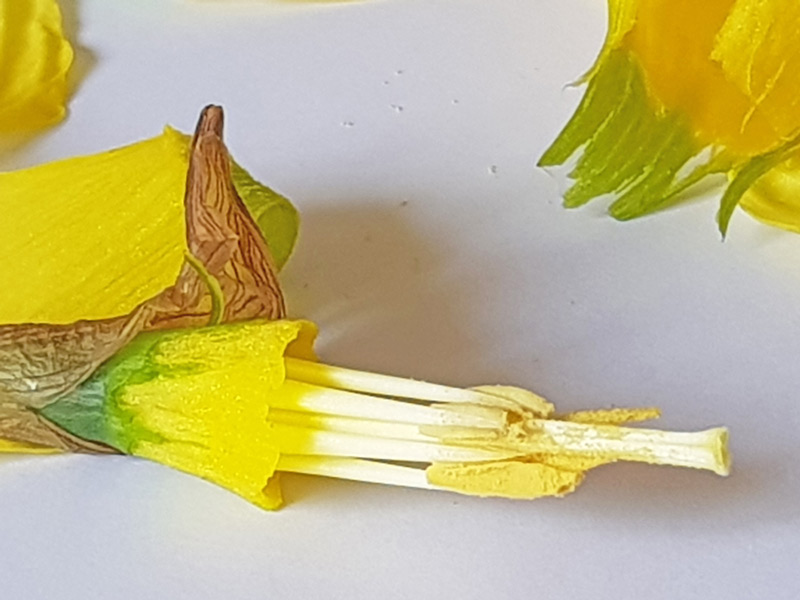
Gently pull away the inner crown.
And can you see that long thin trumpet that stretches out past the pollen?
That's the style and the flared bit at the end of the style is the stigma.
Now the daffodil, needs its own pollen - or another daffodil's pollen - to reach its stigma.
So the clever daffodil puts its stigma in the bee's way. The bee cannot buzz to or from the yummy pollen without passing the stigma.
AND the stigma is just a little bit sticky.
So as the bee rubs past it will leave pollen behind. But what happens to the pollen once it's on the stigma?
Let's follow the pollen and find out.
5. Follow The Pollen
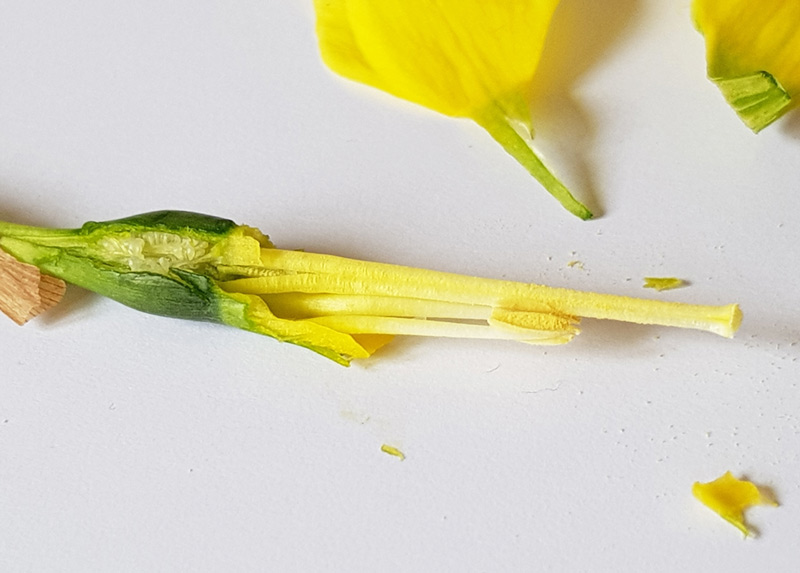
Gently peel away the dry brownish leaf at the bottom of the style and cut open that green bulge - the daffodil's ovary.
Older children could use a knife. But scissors are fine. And we just gently broke ours apart with our fingers.
And look - can you see? - hidden treasure!
The daffodil's very own tiny white eggs ...
6. Magnify The Eggs
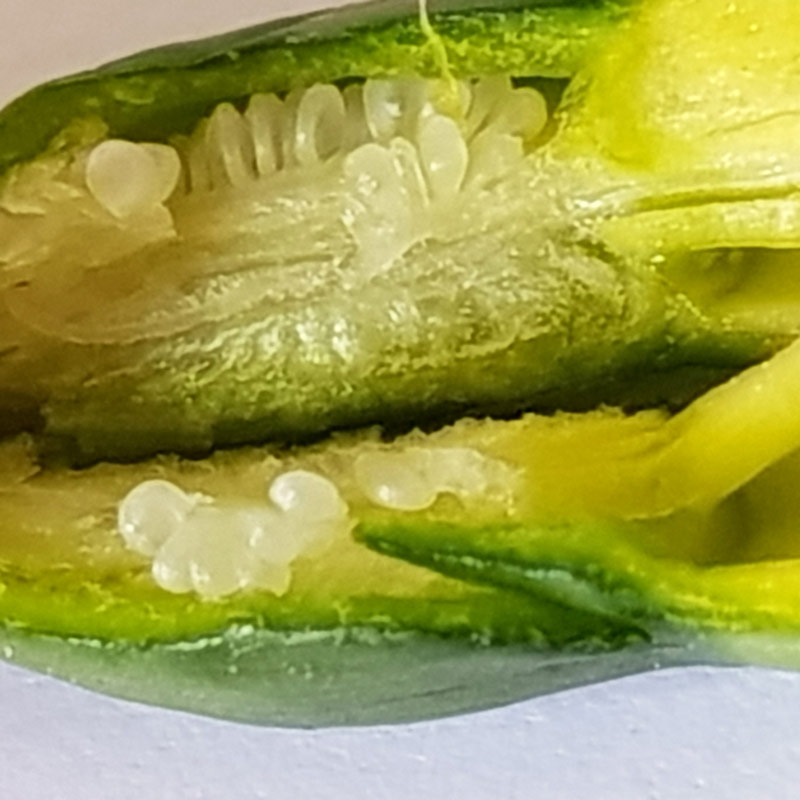
If you've got a good magnifying glass, great.
Check out the eggs under it.
But if not, just use the camera zoom on your mobile phone. And get up close to the daffodil's tiny ovules ...
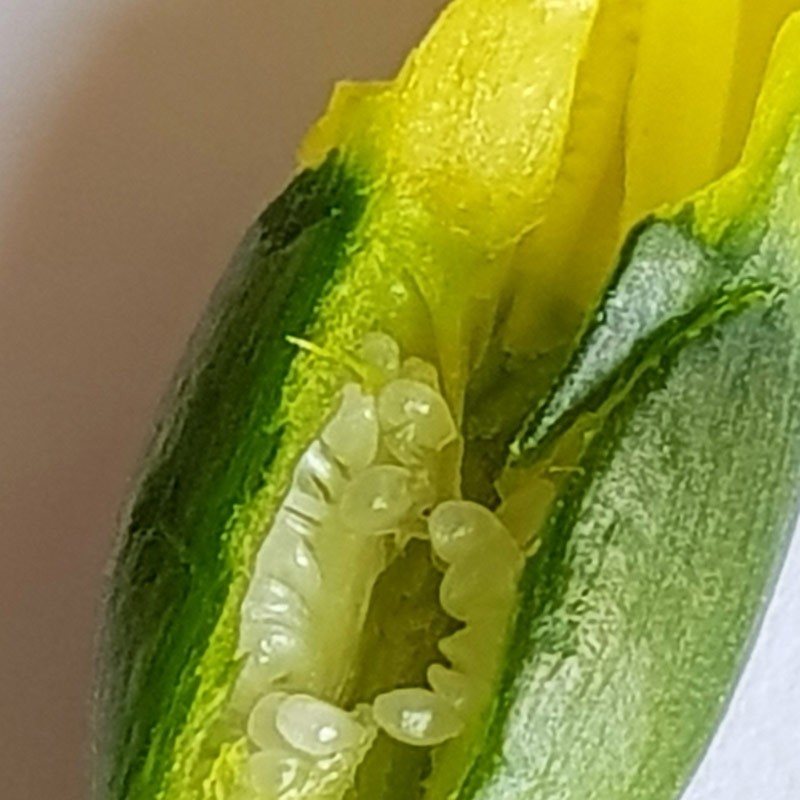
The pollen collected on the sticky stigma makes its way down to the ovaries.
And pollinates these little white eggs.
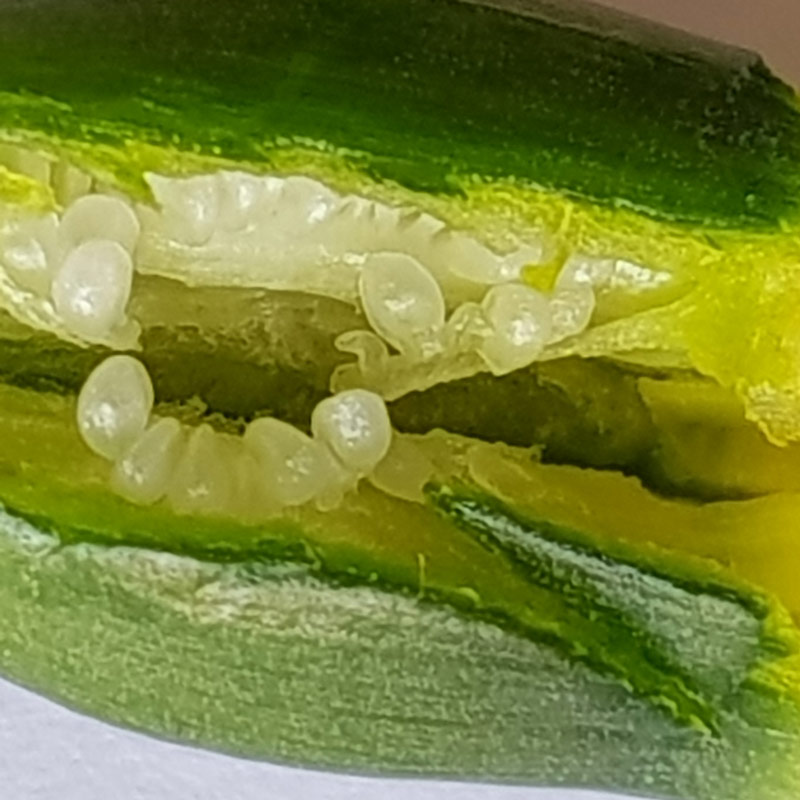
Each pollinated egg will become a seed from which a new daffodil can grow.
Make sure you look out for the daffodil's seed head at the end of spring. Pop it open and you'll be able to see the seeds the pollinated eggs became.
You could plant them.
BUT you will have to be patient.
Because your little daffodil will not produce its own eggs ... or it's own golden gown ...
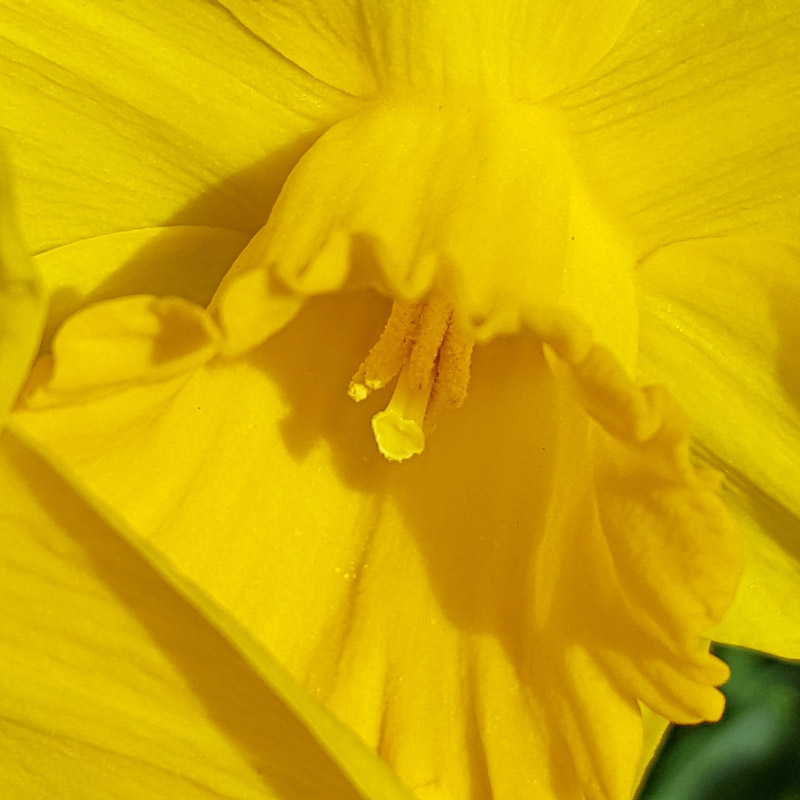
... for another 4 or 5 years. Wow! Which is why we usually grow daffodils from bulbs.
I do hope you have fun dissecting your daffodils.
Now we've discovered all the different parts of the daffodil and the roles they play in pollination, we're ready to uncover:
- How Bees See To Pollinate Flowers (very surprising AND super cool!)
- Plants With Males & Female Flowers
- Plants Pollinated Without Insects
Or for fun nature crafts check out these Petal Paintings and lovely Flower Crafts.
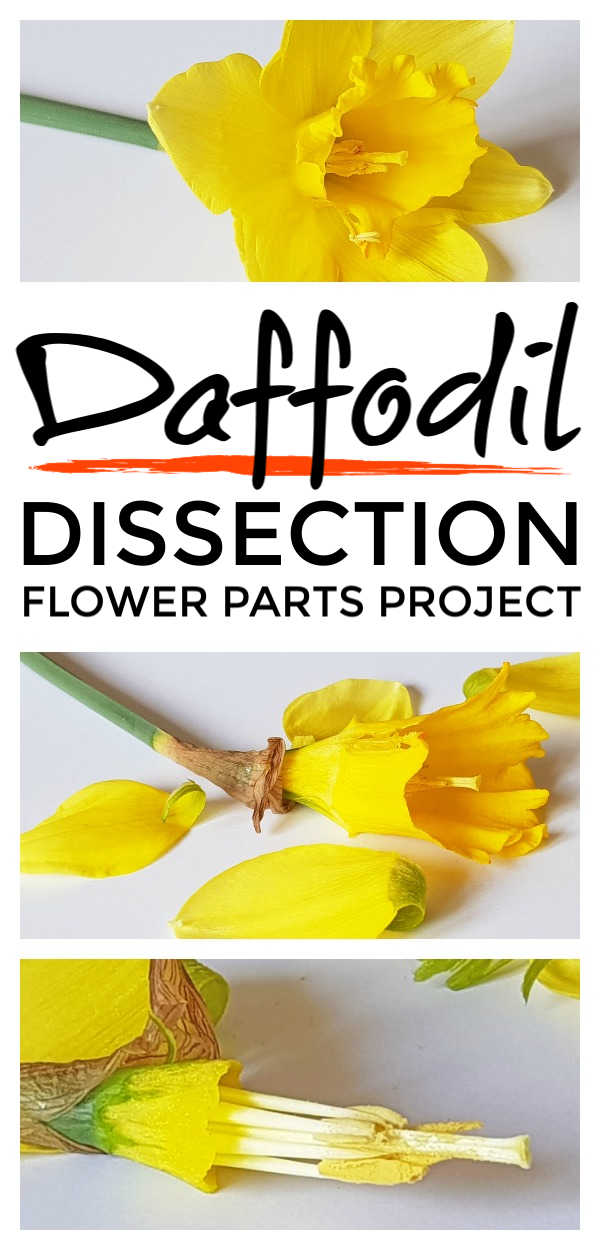






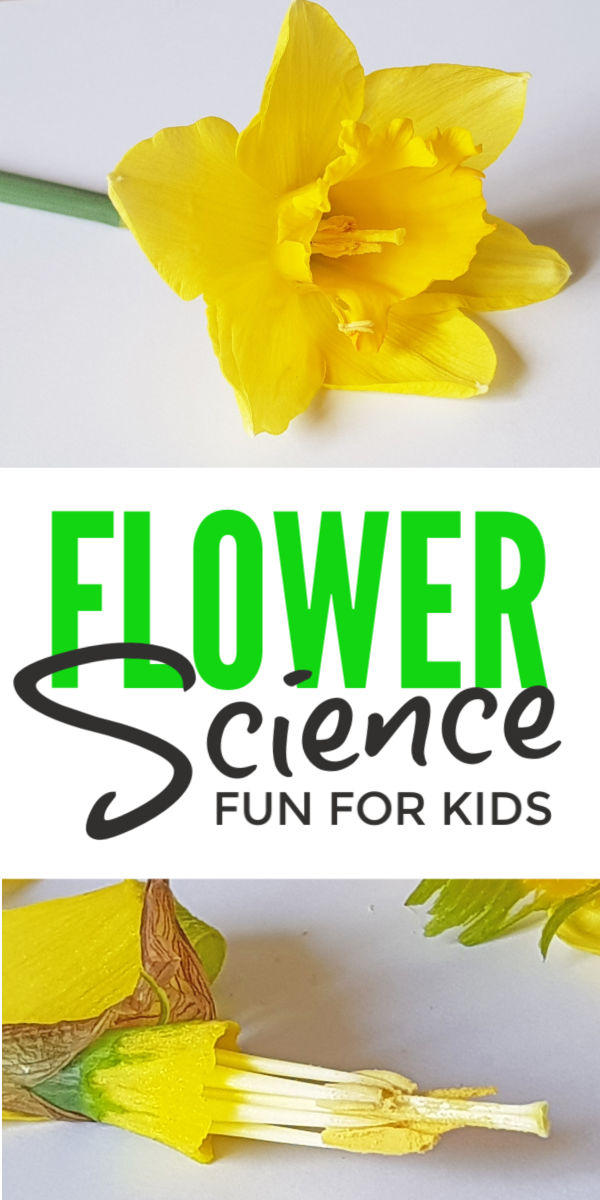
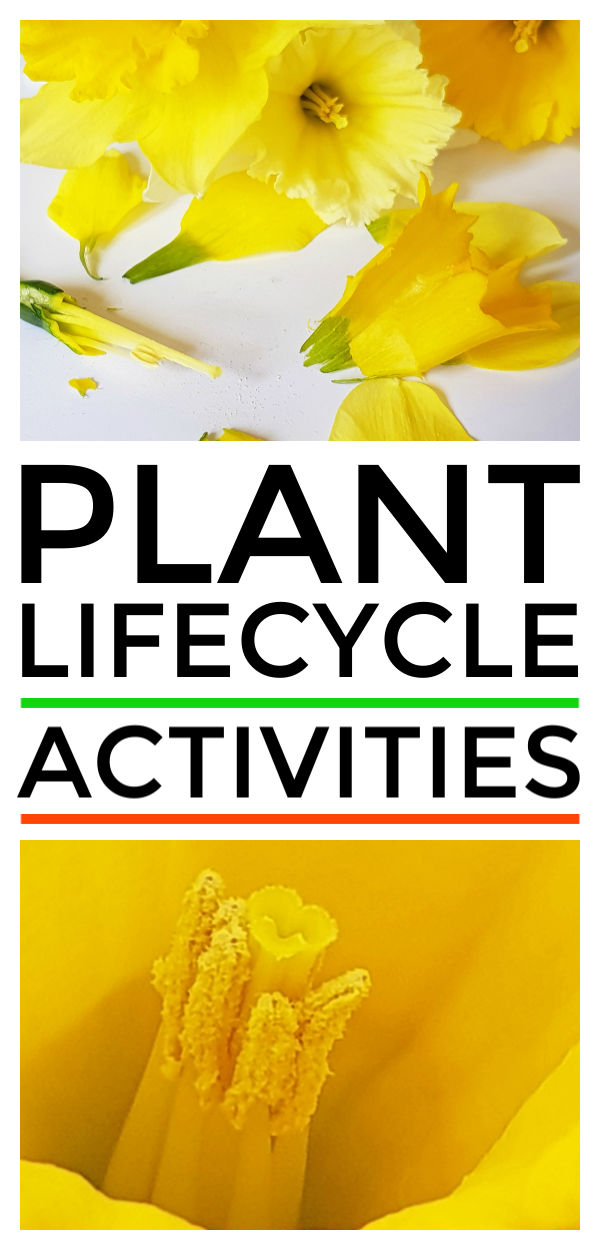
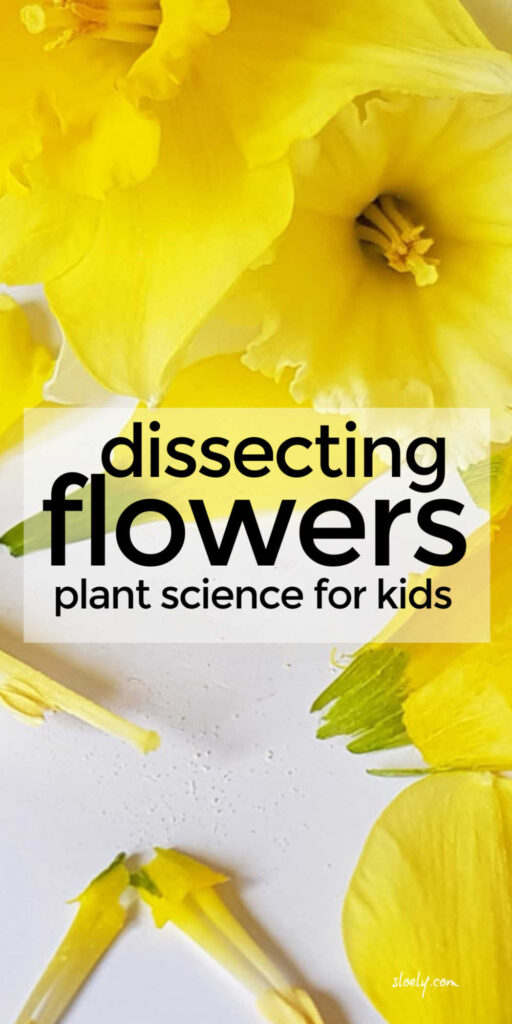
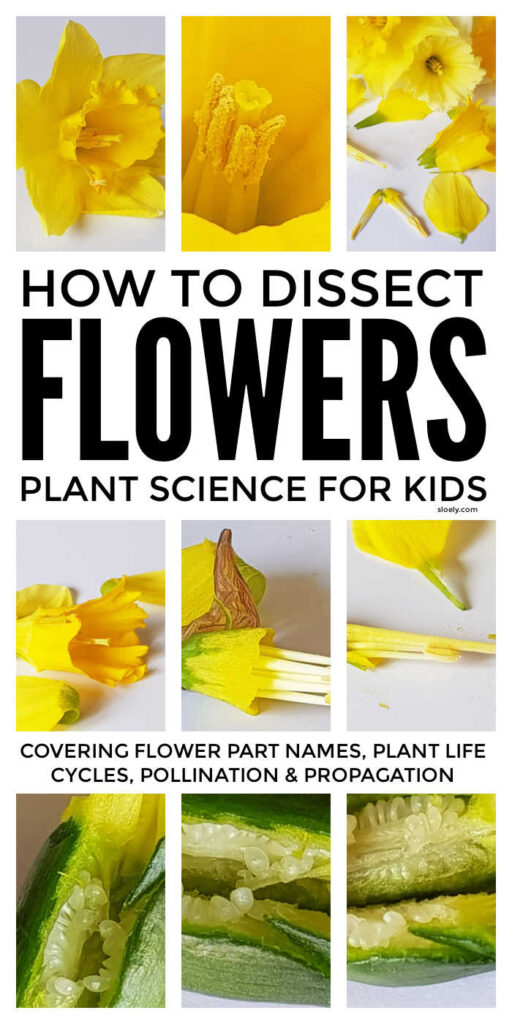




[…] Dissecting Daffodils As the kids dissect the daffodils, they can learn more about the science behind them and how they are pollinated. […]